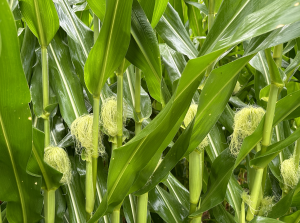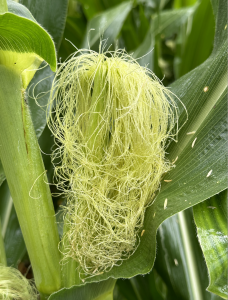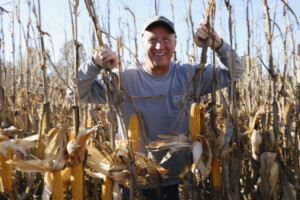How do you just find 1.5 million acres? That’s like finding two Rhode Islands. But that’s what USDA did on Friday, when they upped US corn acreage to 91.5 million, from the 90 million acres estimated in March. Predictably, that sent the market tumbling down. New corn prices are now trading in the $3s. These are not sustainable prices, especially in light of historically high costs of chemicals, seed, fuel, machinery and land. Like it or not, the US farm economy is largely based on corn. It’s our most widely planted crop, it requires the most fertilizer, our ag infrastructure has been created to support it and many public policy decisions, including our nation’s energy and clean air policies, are geared around supporting the tropical grass. So when corn prices are depressed the whole of agriculture is in peril. Sure, it starts with the 315,000 farmers who grow it. Their pencil-thin margins just plummeted well into the red. But it cascades into allied industry and into rural communities. One of the big three equipment manufacturers, AGCO, is laying off 6% of its workforce. And the industry’s green giant, John Deere, just announced layoffs of 610 production workers, while salaried employees are bracing for significant layoffs later this month. Biofuel tax incentives and aviation fuels hold game-changing demand potential for the corn industry. And the current economic landscape will further motivate growers to seek these new revenue streams. But near term, there’s no yellow brick road in sight for the yellow crop.
Corn isn’t the only crop with depressed prices. New crop soybeans are trading in the 10s, apple growers are losing $100 per bin, walnut prices are below break even… and the list goes on. You might think these low farm prices would benefit consumers. Until you visit the grocery store. As we approach Independence Day, the price of your July 4th cookout will be 5% higher than last year; 30% higher than just five years ago. A simple menu that includes hamburgers, baked beans, chips, lemonade and ice cream will run an average of $71.22 for a group of 10.
Pollination is underway in my cornfield. So it’s make-or-break time. This is by far the most critical point in a corn plant’s life. Now is when the plant literally determines how many kernels will appear on each ear. Stress must be mitigated during this intensive two-week span. Pollination is tricky in the Delta, where high levels of humidity – even during the morning hours, when pollen shed is at its peak – can prevent granules from shedding and interfere with the process, while high heat can add undue stress. Once tassels emerged, I irrigated the corn and applied a variety of Huma products: Breakout, Super Nitro, Max Pak, Calcium, Super K, Lucky 7, Crop Gard and Proud 3. Products were applied using a ground sprayer. The tops of the plants were above the boom, causing the boom to brush against the tassels, which I believe aided in dropping pollen granules. Two days later, we received 0.75” of rain aided with a slight wind, which further aided the process.



I was wrong. And I’m happy to brag about it. Twelve years ago, while serving as President of the Metamora (Illinois) summer swim team, we were holding our team registration night. A nice lady walked up to me and said she wanted to register her daughter. I looked over and noticed an older daughter, then asked if that girl wanted to join the team too. The lady paused, and politely whispered that her older daughter had a mental disability, and knowing we had a competitive team (four of our swimmers did end up swimming Division 1, including my son), she didn’t think she should join. I told the mother that while I respect her decision, I asked that she please reconsider, as we would love to have her oldest daughter on our team. I told her we were a very close and accepting group, and famously commented, “I don’t see anybody here going to the Olympics, so I think your daughter will be fine.” But that’s where I was wrong. A good friend of my son’s, Anna Peplowski, was on our team. Later this month, Anna will be traveling to Paris with another summer team, the US Olympic Team. As for the oldest daughter of that nice lady, she indeed joined our team and became an inspiration to all of us. In every event she swam, our kids lined up down her lane and loudly cheered her on. While she may not have won any races, with her grit and determination, she did win our hearts. And like all of us, she’ll be cheering for Anna to win Olympic Gold.
Related Posts

This Week in Ag #22
Twenty years ago, I found myself in the position of operating a farm all by myself. My father, who I was farming with, passed away suddenly that January. So in addition to my full-time ag marketing job, I was flying solo across my family farm in western Illinois.

This Week in Ag #31
#Harvest23 is here! If all goes well, I should be harvesting my corn plot this week. The beginning of fall brings excitement and optimism to the farm. But this year, those feelings appear tempered. Farmer sentiment dropped 8 points last month (according to the Purdue Ag Economy Barometer) as producers shared a dimming view of

This Week in Ag #49
The image below is more than just a funny meme. It depicts how generations of farmers painted the canvas of their fields. The farm I grew up on consisted of a 160-acre field, complete with waterways, hills, wet holes, varying soil types, point rows, and in spots, contest-winning yield potential. We annually split the field

